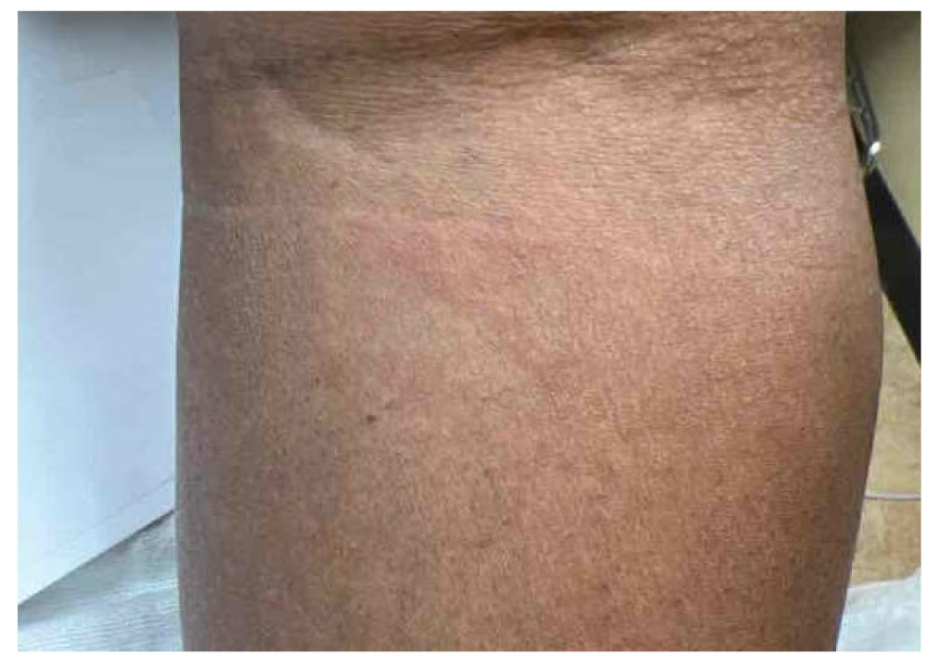INTRODUCTION
Angioedema is a localized submucosal reaction that can be part of a systemic anaphylactic response. The etiology can be difficult to diagnose, but is commonly mast-cell or bradykinin-mediated. Here the authors present a case of hymenoptera (a large order of insects) venom-induced angioedema.1
CASE PRESENTATION
A 58-year-old male presented with a 12-hour history of progressive oral angioedema advancing to glossitis. Their medical history included hypertension and hyperlipidemia, with reported use of lisinopril 3 years ago, which was discontinued due to coughing. Current home medications include losartan (initiated 3 months prior), aspirin, amlodipine, and rosuvastatin. The patient did not recall any enticing events, such as insect bites or stings, so there was high suspicion for losartan-induced angioedema. Upon further questioning, they reported working as an electrician and they had been underneath a house 1 hour prior to the onset of symptoms, where they did recall seeing a ‘wasp’. There was also a questionable history of their mother requiring hospitalization for oral edema, raising concern for hereditary angioedema.
The patient denied any rashes, dysphagia, drooling, hoarseness, stridor, shortness of breath, or abdominal pain. Physical exam was notable for profound lip and tongue base swelling, with slight blunting of the epiglottis evidenced on flexible bronchoscopy. There was a mild area of localized, raised, non-pruritic, erythematous left forearm rash (Figure 1). They were administered intravenous (IV) methylprednisolone 125 mg, IV diphenhydramine 25 mg, and IV famotidine with improvement in symptoms. Ear, Nose, and Throat recommended monitoring for 24 hours for signs of anaphylaxis. Laboratory testing revealed normal erythrocyte sedimentation rate, C-reactive protein, and tryptase levels, with borderline elevations in complement component 3 and 4.2 Their hospital course remained uneventful, and they were discharged home with prednisone, diphenhydramine, epinephrine auto-injectors, and an allergy/immunology follow-up for further allergen testing. Send-out laboratories returned with normal C1 esterase inhibitor antigen level and elevated wasp venom IgE >1,300 (normal <214).

Figure 1: Cutaneous eruption from wasp sting.
DISCUSSION
Hymenoptera stings can lead to IgE-mediated effects that are more commonly localized to cutaneous or submucosal reactions, including angioedema.3 Prompt recognition and management can prevent further progression to anaphylaxis. This case emphasizes the importance of clinical history, and highlights the lab workup to differentiate angiotensin receptor blocker angioedema versus hereditary angioedema versus venom-induced angioedema.








